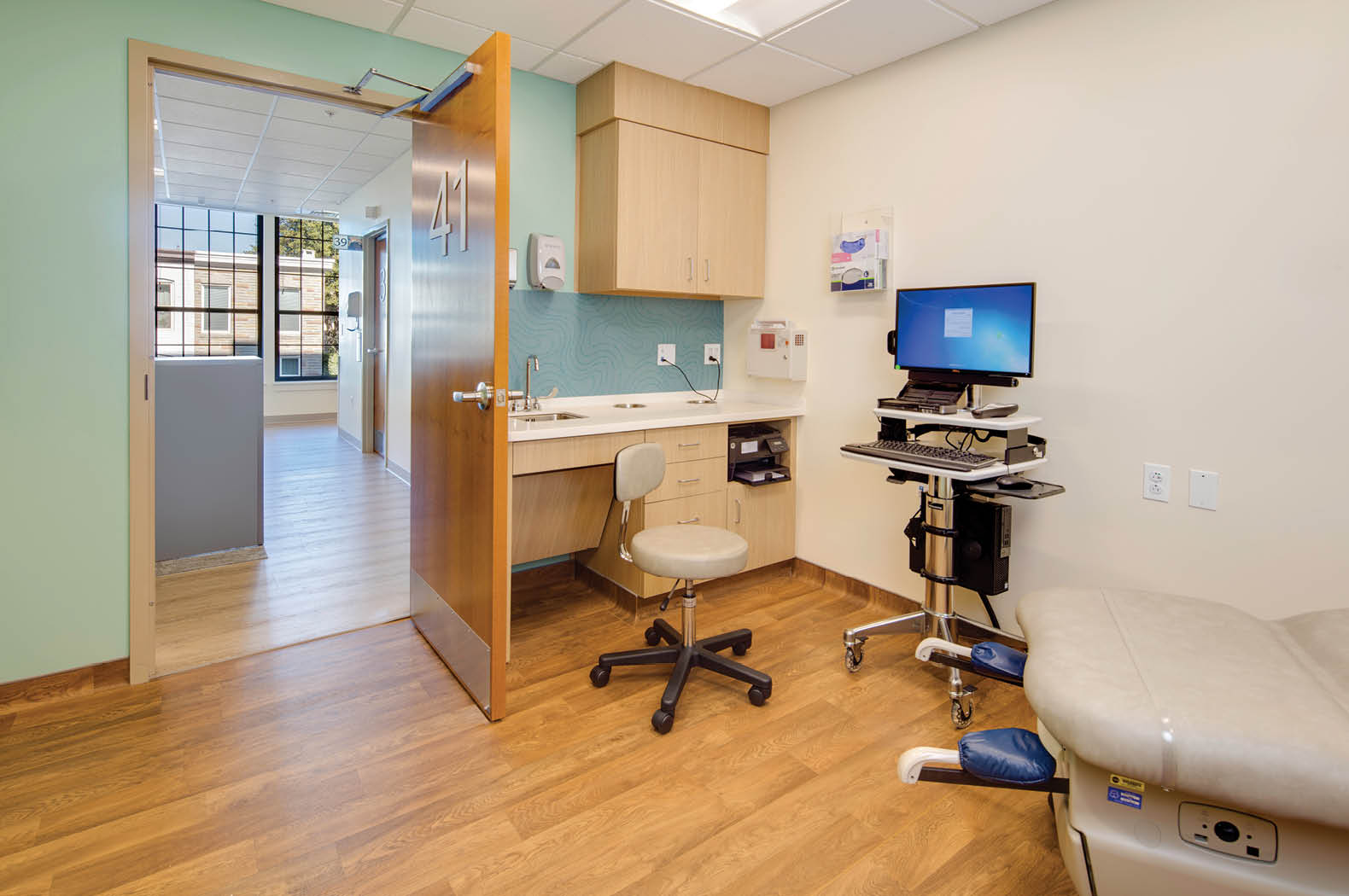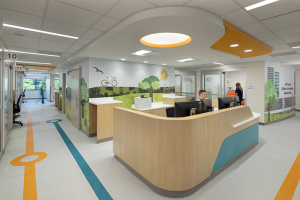Telehealth offers opportunities to improve care in rural areas

While telehealth requires a strong technology infrastructure, it also impacts facility design.
Image by Alain Jaramillo, Courtesy of Hord Coplan Macht
Telehealth jumped from less than 0.2% of all claims in March 2019 to more than 7.5% in March 2020, according to Fair Health, a not-for-profit research firm. This tremendous shift was caused by the pandemic and the Centers for Medicare & Medicaid Services’ emergency response to allow reimbursement for telehealth.
Acceptance of these technology solutions by clinicians, patients and payers will provide much-needed support to rural organizations. On the consumer side, patients generally have high satisfaction and comparable outcomes with telehealth for sick visits with primary care providers.
Behavioral health, where access for patients provides critical intervention, represents almost one-third of all claims. Additionally, many specialties can benefit from a transition to remote visits for pre- and post-surgery education, medication compliance visits and follow-up care where the clinician does not need to physically touch the patient.
Telehealth also has the opportunity to significantly assist rural health care with acute care services. For years, many hospitals have used remote monitoring services, where telemetry monitoring is done off-site or remotely on-site for high-acuity patients. This technology can assist rural hospitals in providing care for these high-acuity patients without requiring staff on-site at every facility to monitor patients.
Similarly, reading services for diagnostic imaging can be done remotely. Using operating room integration technology, specialists can observe and support more complex surgeries at rural hospitals from anywhere in the world. Finally, telehospitalists provide care oversight remotely, allowing rural hospitals to solve recruitment challenges and continue to care for patients close to home.
While telehealth requires a strong technology infrastructure to bring hardware to the patient or clinician and the seamless software integration to facilitate the patient experience, it also has a facility design impact. The shift to telehealth appointments will reduce the number of exam rooms and the size of waiting rooms and support areas for many rural clinic spaces as fewer patients come to in-person visits.
In contrast, it may require more private offices or dedicated telehealth rooms for physicians and clinicians to have the appropriate privacy during appointments to provide patient confidentiality. Those offices may be in the individual rural health facilities or centralized in a hub that serves a rural health system, as specialists may make fewer trips to each individual site.





